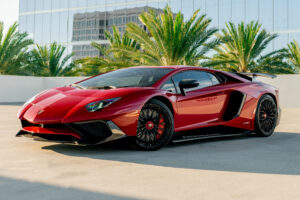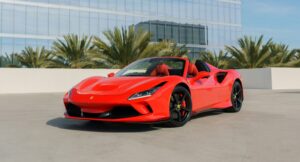Bayerische Motoren Werke, or BMW, is a German multinational corporation that has significantly shaped the automotive and motorcycling landscapes since its inception. Founded in 1916, BMW was a manufacturer of aircraft engines, which played a pivotal role during both World Wars.
Transitioning from aviation to ground transport, BMW has continuously evolved into one of the leading premium manufacturers of automobiles and motorcycles, boasting a reputation for performance and quality.
Headquartered in Munich, Bavaria, BMW has expanded its influence worldwide, setting standards in luxury vehicles, sports sedans, and motorbikes. The company has also been at the forefront of technological advancements and innovative mobility services, often pioneering new trends and setting benchmarks in the automotive world.
Over the past century, BMW has maintained a visionary approach to its operations. It is unwaveringly committed to future-oriented mobility solutions while respecting its past achievements and heritage.
Early Foundations and Aircraft Engines
This section delves into BMW’s inception, charting its evolution from an aircraft engine manufacturer during World War I to its eventual pivot towards motorcycle engines.
Origins and Early Company Development
Bayerische Motoren Werke, more commonly known as BMW, began with Rapp Motorenwerke and Bayerische Flugzeugwerke.
Rapp Motorenwerke, established in 1913 by Karl Rapp, was primarily an aircraft engine manufacturer. BMW’s origins are rooted in this enterprise, which fused with Bayerische Flugzeugwerke – a company dating back to 1916.
BMW and World War I
During World War I, the demand for aircraft engines surged, propelling Rapp Motorenwerke into prominence. The company contributed significantly to the war effort by producing engines, most notably the BMW IIIa, an inline six-cylinder engine revered for its high-altitude performance.
Post-war conditions and the Treaty of Versailles prohibited aircraft production in Germany, forcing the company to abandon aircraft engines.
The Shift from Aircraft to Motorcycle Engines
BMW’s transition from aircraft to land vehicles began with the establishment of motorcycle production. 1923, the BMW R 32 was introduced, equipped with a boxer engine. This motorcycle marked BMW’s foray into a new era.
The boxer engine, characterized by horizontally opposed cylinders, would become a hallmark of BMW’s motorcycle offerings, setting a foundation for future innovation in engine design.
Expansion and Automotive Milestones
BMW’s expansion in the automotive industry is characterized by strategic market entries, post-war recovery, and defining its stake in the luxury segment. These phases marked significant milestones influencing the company’s trajectory.
Entering the Automobile Market
BMW acquired Fahrzeugfabrik Eisenach in 1928, marking its foray into automotive construction. This strategic move allowed BMW to start producing its first cars using designs from the Eisenach plant.
The BMW 3/15, based on the Dixi 3/15 DA-1, was the company’s initial automobile offering. In 1933, BMW produced the 303, its first car with the distinctive BMW kidney grille and a straight-six engine, laying the groundwork for future models.
Post-War Struggles and Revival
The aftermath of World War II was a challenging period for BMW. The company had to rebuild from scratch because its facilities and economy were ruined. Aircraft engine production ceased, prompting a return to motorcycle and automobile manufacturing.
In 1951, BMW introduced the BMW 501, a luxury sedan that did not achieve expected sales but helped reestablish the brand’s presence. The real turnaround began with Herbert Quandt’s increased investment in the late 1950s, credited with saving the company from bankruptcy.
The New Class and Luxury Segment
In the 1960s, BMW launched the New Class (Neue Klasse), a series of compact sedans that revitalized the brand and set a new direction for its future.
Notable models such as the 1500 and 1600 led to the successful BMW 3 Series and 5 Series development, which became core products defining the modern luxury car market. These vehicles cemented BMW’s reputation as a manufacturer of sporty, well-engineered cars that were fun to drive, expanding their foothold in the global automotive industry.
Global Growth and Diversification
BMW’s trajectory from an aircraft engine manufacturer to a diversified global player in the automotive industry underscores its strategic adaptability and innovative ethos. Growth through diversification and technology has been a hallmark of its existence.
Acquisitions and Brand Expansion
Since its inception, BMW has strategically grown to include a range of prestigious brands.
In 1994, BMW acquired the Rover Group, which included the iconic Mini brand. This acquisition allowed BMW to broaden its portfolio and appeal to a wider market.
Eventually, BMW retained Mini and the rights to the Rolls-Royce brand, further cementing its stance in luxury automobiles.
With its unique design and cultural significance, the Mini marque has become a quintessential part of BMW’s brand, attracting a distinct buyer demographic. Similarly, the stewardship of the Rolls-Royce brand has enabled BMW to set the benchmark for ultimate luxury.
Technological Innovations and Motorsports
Under the umbrella of technological progress and automotive prowess, the BMW M Division stands out. It is renowned for engineering high-performance variants of BMW models.
In motorsports, BMW has claimed victories and podium finishes, reinforcing the brand’s innovative and competitive spirit.
In terms of technological milestones, BMW has been a pioneer in adopting alternative drivetrains, including hybrid models that blend performance with efficiency. The brand has also created its first front-wheel-drive car to meet the varied needs of global consumers.
Sustainability Initiatives and Electric Mobility
With sustainability as a focal point, BMW has committed to integrating eco-friendly practices into every facet of its operations, from production to product.
The BMW i3, an ambitious leap into electric mobility, materialized as one of the first all-electric vehicles from a major luxury automaker.
BMW’s vision encapsulates a future-oriented approach where electric mobility and performance coexist. To cement this commitment, the company has adopted a comprehensive sustainability action plan aiming for environmentally friendly and socially equitable economic progress.
Contemporary Challenges and the Future of BMW
Faced with the evolving automotive landscape, BMW faces challenges that mirror the industry at large. These challenges include transitioning to sustainable mobility and shifting from internal combustion engines to electric vehicles (EVs).
Sustainable Mobility and Electric Future
By 2025, BMW plans to significantly boost its EV offering. The automaker aims to make up 50% of its sales from all-electric vehicles. This denotes a transformational phase for BMW as it reimagines its approach to mobility.
Carbon Neutrality
The Group has set a business ambition to be CO2-neutral across its entire value chain by 2050. This involves refocusing the manufacturing process at production facilities. For instance, their plant in Dingolfing is one of the largest and most complex in the BMW Group’s network.
Digital Innovation
To remain competitive, BMW invests in digital products and services. These ensure that vehicles like the BMW i3 and BMW iX reflect the latest in automotive technology and offer enhanced flexibility and connectivity.
Headquarters
At its headquarters, BMW is likely dedicating resources to manage this transition. They are focusing on R&D and embracing changes that will define the future of mobility. The transition represents a move towards a mobility ecosystem independent from fossil fuels and maximizes efficiency. This will reshape what luxury transportation entails.

